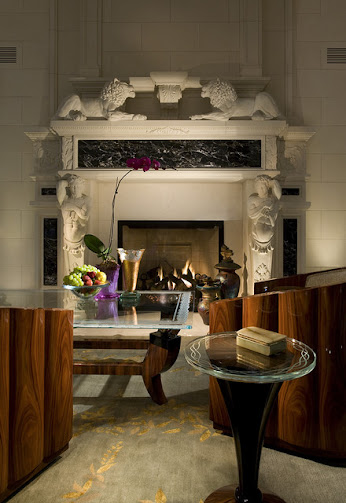Should Britain return Elgin Marbles back to Greece? (EC)

What do you think?
Architecture in Ancient Greece
Greek life was dominated by religion and so it is not surprising that the temples of ancient Greece were the biggest and most beautiful. They also had a political purpose as they were often built to celebrate civic power and pride, or offer thanksgiving to the patron deity of a city for success in war. The Greeks developed three architectural systems, called orders, each with their own distinctive proportions and detailing. The Greek orders are: Doric, Ionic, and Corinthian. The Doric style is rather sturdy and its top (the capital), is plain. This style was used in mainland Greece. The Ionic style is thinner and more elegant. Its capital is decorated with a scroll-like design (a volute). This style was found in eastern Greece and the islands. Corinthian is the most ornate of the classic orders of architecture. It was also the latest, not arriving at full development until the middle of the 4th century B.C.
The construction and design of Greek temples was dependent on local raw materials. Fortunately, although Ancient Greece possessed few forests, it had lots of limestone, which was easily worked. In addition, there were plentiful supplies (on the mainland and the islands of Paros and Naxos) of high grade white marble for architectural and sculptural decoration. Lastly, deposits of clay, used for both roof tiles and architectural decoration, were readily available throughout the country, notably around Athens.
However, the quarrying and transport of stone was both costly and labor intensive, and typically accounted for most of the cost of building a temple. It was only the wealth which Athens had accumulated after the Persian Wars, that enabled Pericles (495-429) to build the Parthenon (447-422 BC) and other stone monuments on the Acropolis, at Athens. In some cases, older stone monuments were cannibalized for their marble and other precious stones.
Typically, each building project was controlled and supervised by the architect, who oversaw every aspect of construction. He selected the stone, managed its extraction, and supervised the craftsmen who cut and shaped it at the quarry. At the building site, master stone masons made the final precise carvings, to ensure that each stone block would slot into place without the need for mortar. After this, laborers hoisted each block into position. The architect also supervised the professional sculptors, who carved the reliefs on the frieze, metopes and pediments, as well as the painters who painted the sculptures and various architectural elements of the building.
The Greeks regularly painted their marble temples. In fact they seem not only to have painted them, but to have used bright colors like red, blue, and gold.
Great video from the History Channel about how the Parthenon was built
http://www.history.com/topics/ancient-history/ancient-greece/videos/rebuilding-acropolis
| Temple of Olympian Zeus, Athens: The Temple of Olympian Zeus in Athens is an example of the Corinthian order of architecture. Begun in the 2nd century BCE, it took almost 700 years to finish |
| Acroplis in Athens: Rising 500 feet above sea level, the Acropolis in Athens showcases some of the finest examples of Greek architecture |
| Parthenon at Dusk: Completed in the middle of the 5th century BCE, the Parthenon is the centerpiece of the Acropolis and is often regarded as the masterpiece of the Doric order of architecture. Its name refers to Athena Parthenos, or "Athena the Virgin |
| Ancient City of Paestum, Italy: The ancient city of Paestum, founded by Greek colonists around the 6th century BC History of the Greek Key Motif Meander is a decorative border constructed from a continuous line, shaped into a repeated motif. Such a design is also called the Greek fret or Greek key design, although these are modern designations. On the one hand, the name "meander" recalls the twisting and turning path of the Maeander River in Asia Minor, and the meander is the figure of a labyrinth in linear form. Among some Italians, these patterns are known as Greek Lines. Meanders are common decorative elements in Greek and Roman art. In ancient Greece they appear in many architectural friezes, and in bands on the pottery of ancient Greece from the Geometric Period onwards. The design is common to the present-day in classicizing architecture. The meander is a fundamental design motif in regions far from a Hellenic orbit: labyrinthine meanders appear in bands and as infill on Shang bronzes, and many traditional buildings in and around China still bear geometric designs almost identical to meanders. The pattern also appears on the quintessential New York City paper coffee cup, the Anthora. They were among the most important symbols in Ancient Greece; and perhaps symbolized infinity and unity; many ancient Greek temples incorporated the sign of the meander. Greek vases, especially during their Geometric Period, were probably the main reason for the widespread use of meanders; alternatively, very ocean-like patterns of waves also appeared in the same format as meanders, which can also be thought of as the guilloche pattern. The shield of Philip II of Macedon, conserved in the museum of Vergina, is decorated with multiple symbols of the meander. Meanders are also prevalent on the pavement mosaics found in Roman villas throughout the Roman empire. A good example is at the Chedworth Roman Villa in England, leading many historians to believe that the pattern was part of the original inspiration for the Latin "G" character. Greek Influence on Modern Architecture and Interiors       |
No comments:
Post a Comment